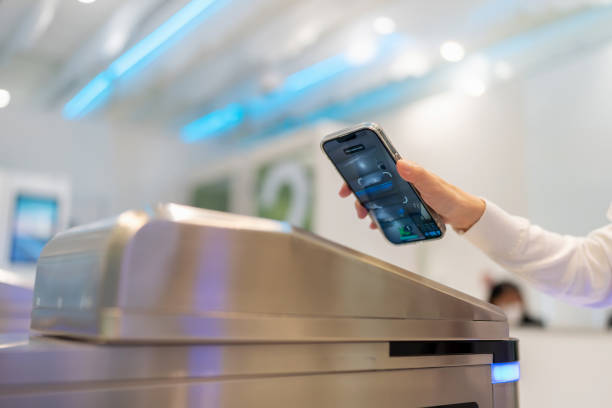Introduction
QR codes in access control systems have gained significant attention. As organisations seek more efficient, cost-effective, and user-friendly solutions, QR code technology is becoming a compelling alternative to traditional and advanced security measures. In this article, we will explore why QR codes are such an attractive solution and provide a comprehensive comparative analysis of QR codes against conventional methods as well as more sophisticated technologies like biometrics to understand their advantages, limitations, and integration possibilities.
Why QR Codes Have Gained Popularity in the Security Industry
The rise in demand for QR code technology within the security sector can be attributed to several factors. The convenience of contactless entry, the ease of code generation and distribution, and the ability to integrate with existing digital systems have all contributed to its widespread adoption. Additionally, as mobile devices have become an integral part of our lives, the use of QR codes in security applications has become more practical and accessible.
Examples of Industries and Applications Where QR Codes Are Being Widely Adopted
Specific Applications in the Hospitality Industry
The hospitality industry, in particular, has seen a surge in the use of QR codes for access control. Hotels and resorts are using this technology to enhance guest experiences by providing seamless, contactless access to rooms and facilities. For example, QR codes can be sent directly to a guest’s smartphone upon check-in, allowing them to bypass traditional check-in processes and enter their room with a simple scan.
If you want to have more details about our QR-Code Access Control Solution, click here
Benefits for Both Guests and Management
For guests, the use of QR codes means a smoother, more convenient experience, while for management, it translates into reduced operational costs and improved security. Furthermore, the flexibility of QR codes allows for easy updates and changes to access permissions, which can be particularly beneficial in dynamic environments such as hotels.
Limitations of QR Code Technology
Potential Security Risks
Despite their many advantages, QR codes are not without limitations. One of the primary concerns is the potential for security risks, such as tampering or duplication of codes. As QR codes are essentially visual representations of data, they can be copied and reused if not properly secured. To mitigate these risks, Polimek offers dynamic QR codes through its mobile app, which allows codes to be generated with the same information within a specific time period, enhancing security.
If you want more information about Polimek PEMS app, click here.
Dependency on Mobile Devices and Potential Access Issues
Another limitation is the dependency on mobile devices. Access control using QR codes relies on users having a functional smartphone, which can be a drawback in cases where the device is lost, damaged, or has a depleted battery.
Comparing QR Codes to Traditional Access Control Methods
When comparing QR codes to traditional access control methods like key cards and PINs, several differences become apparent. QR codes offer greater convenience by eliminating the need for physical items and allowing for remote access management. However, traditional methods may offer higher security, particularly in environments where physical presence is a priority. Transitioning from traditional methods to QR code systems can be a seamless process, especially when integrating with existing infrastructure. The cost savings and increased convenience offered by QR codes make them an attractive option for organisations looking to modernise their security systems.
If you want more information about Polimek card readers, click here.
QR Codes vs. Advanced Access Control Technologies
While QR codes offer flexibility and ease of use, biometric technologies such as fingerprint or facial recognition provide a higher level of security. Biometric systems are inherently more secure as they rely on unique physical characteristics that cannot be easily duplicated or tampered with. However, QR codes may still be preferable in certain situations due to their lower cost and ease of deployment. Polimek offers solutions such as the PL03 biometric reader, which is ideal for locations with high-security requirements. QR codes may be the preferred choice in environments where ease of access, cost, and user convenience are more critical than the highest level of security. For instance, in large venues where quick and efficient access is needed, QR codes can provide a practical solution.
Integration of QR Code Technology with Existing Security Systems
QR code technology can be effectively integrated with other access control methods to create a hybrid system. For example, QR codes can be used alongside traditional key cards or biometric systems to offer multiple layers of security. This integration can provide flexibility, allowing organisations to choose the most appropriate method for different areas or levels of access. Hybrid systems that combine QR codes with other technologies can offer enhanced security while maintaining the convenience and cost-effectiveness of QR codes. For instance, a system such as Polimek’s PL01 that uses biometric authentication for high-security areas and QR codes for general access can provide a balanced approach, catering to various security needs within the same facility.
Conclusion
QR code technology has emerged as a versatile and cost-effective solution in access control and security industry. They offer numerous benefits in terms of convenience, scalability, and ease of implementation. However, it is not without its limitations, particularly when compared to more advanced technologies like biometrics. By understanding the strengths and weaknesses of QR codes, organizations can make informed decisions about how best to integrate them into their security strategies, potentially in combination with other access control methods to create a comprehensive and robust security system. Polimek, with its wide range of solutions, not only stands at the heart of this growing trend but also offers additional options that make it the ideal choice for all types of access control needs. Whether it’s QR code technology, biometric systems, or hybrid solutions that combine the best of both worlds,




